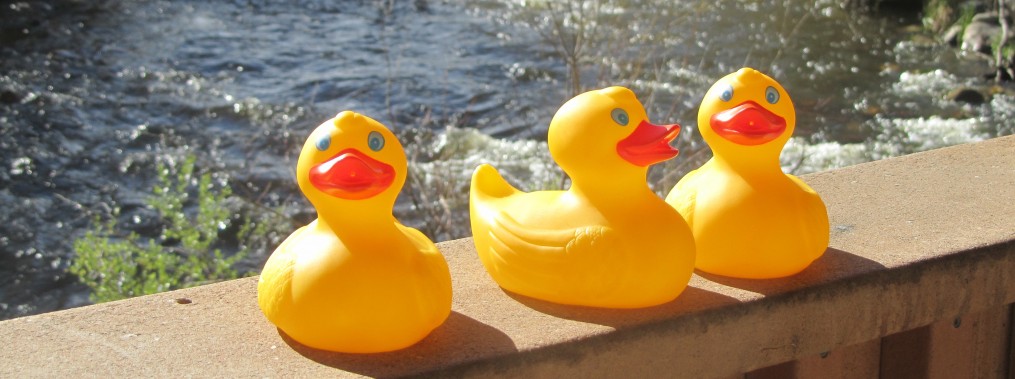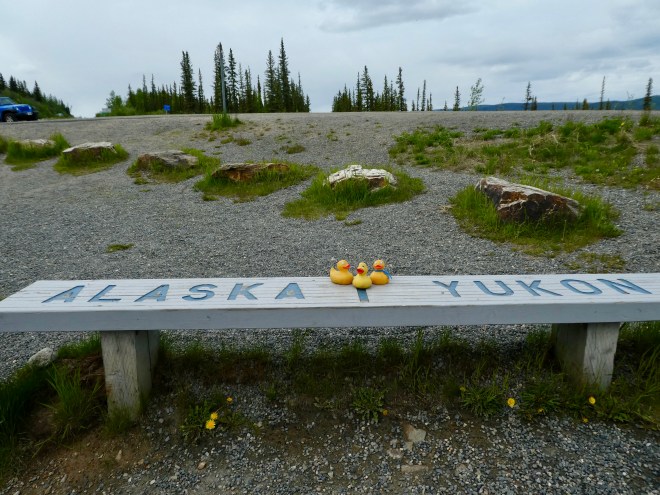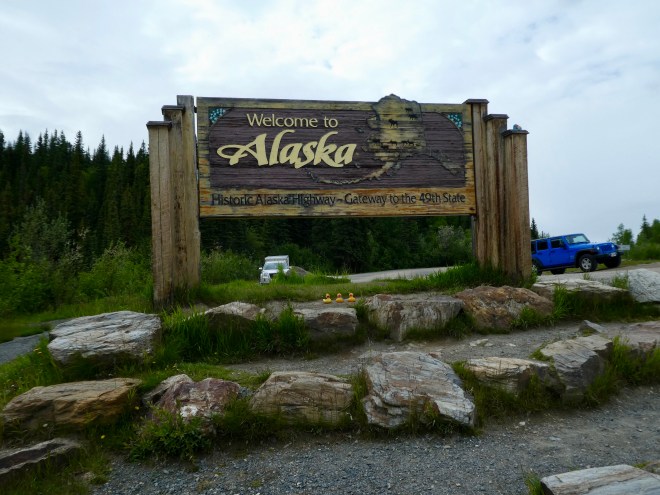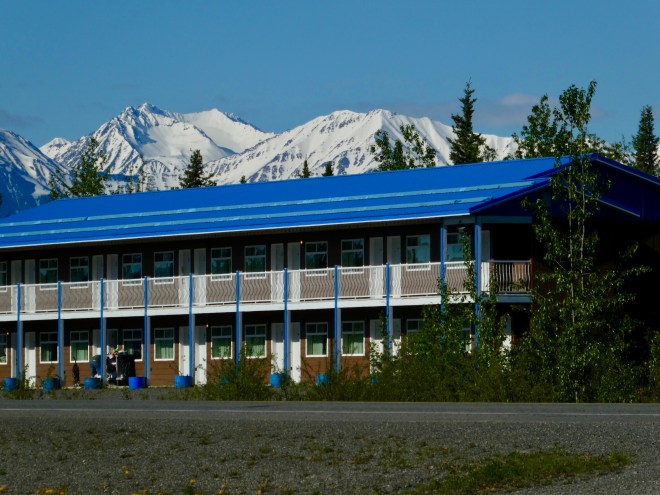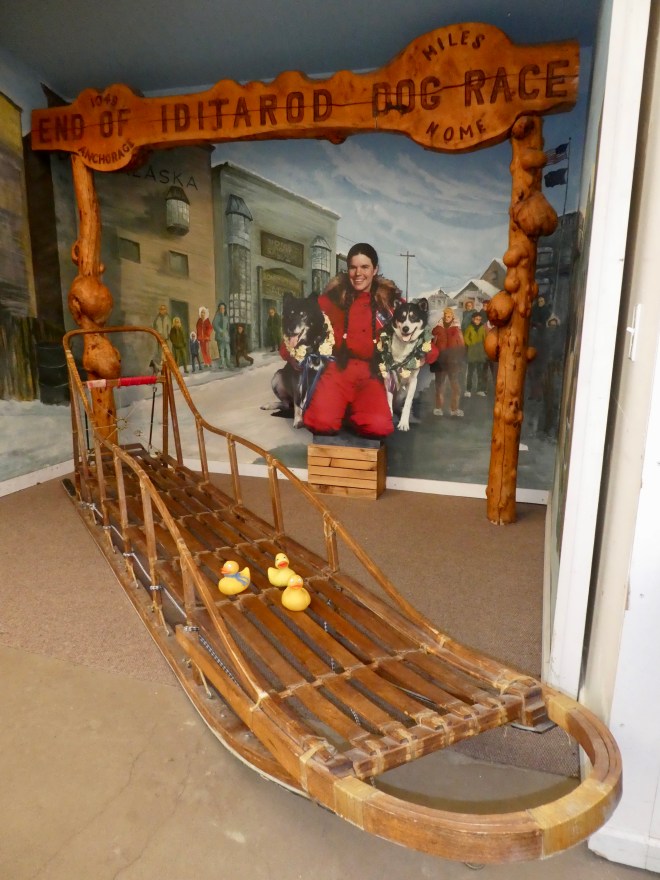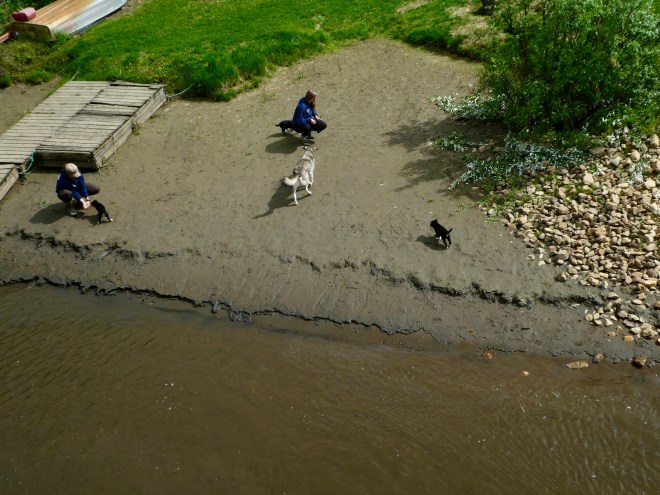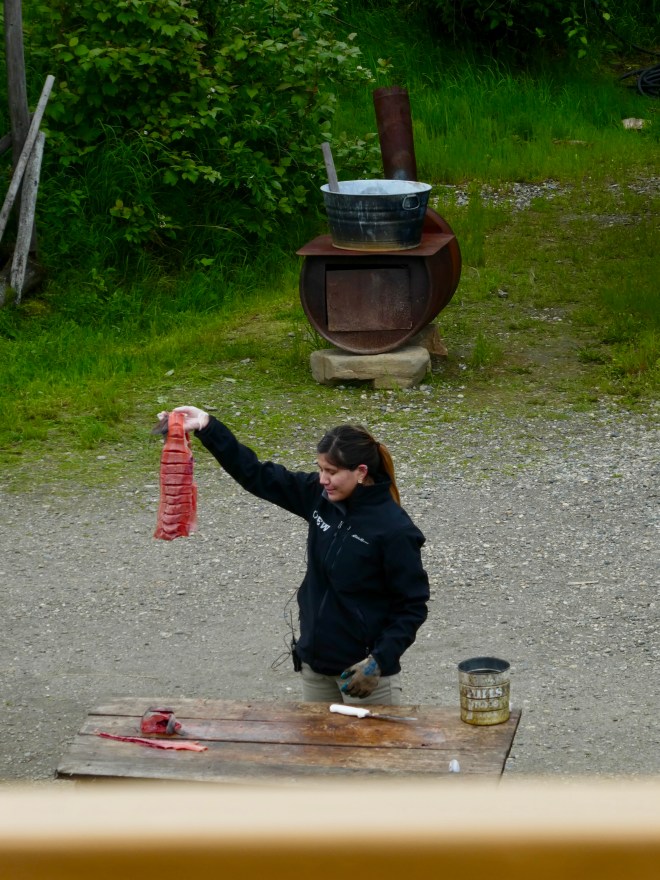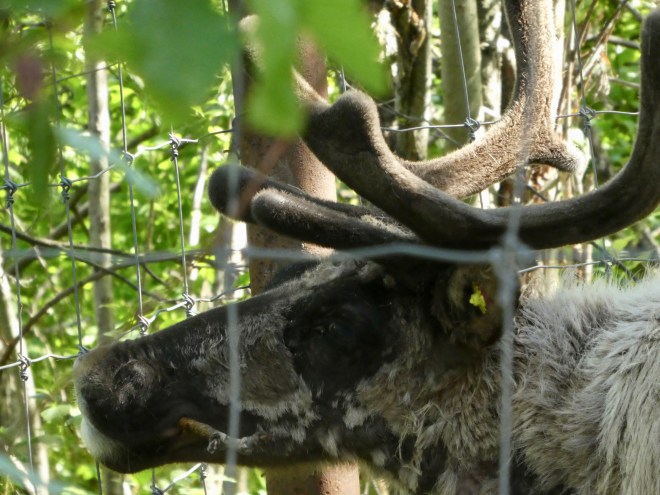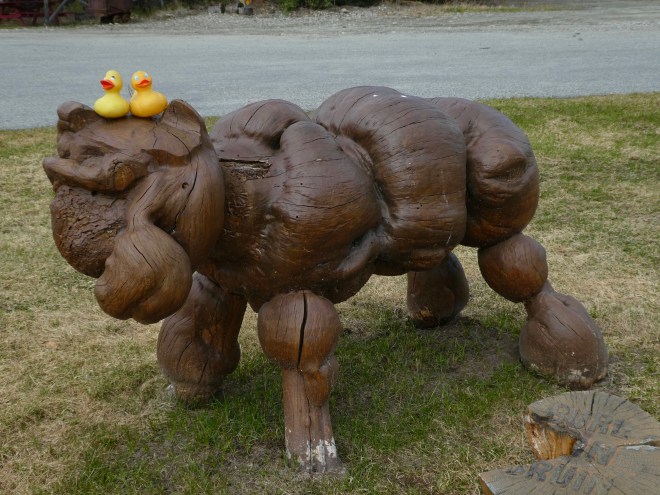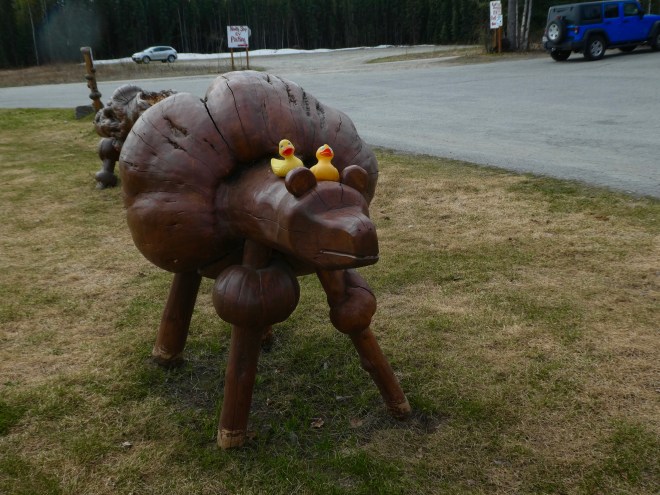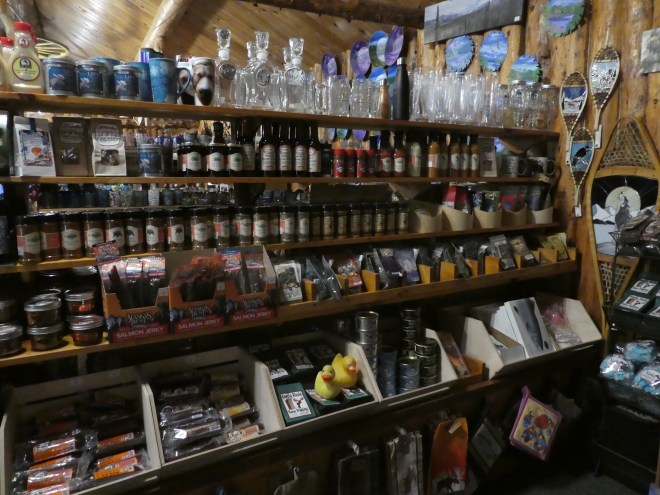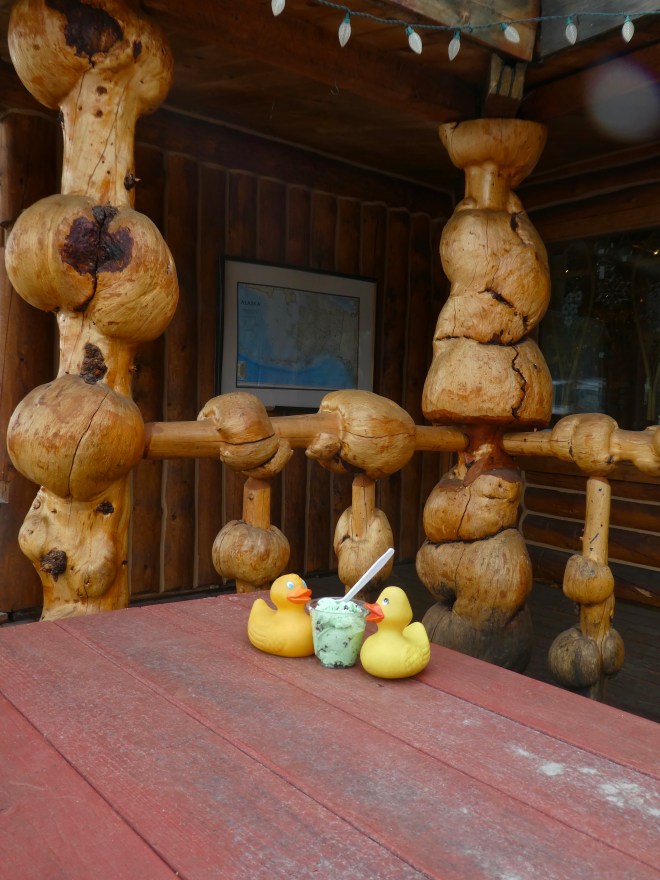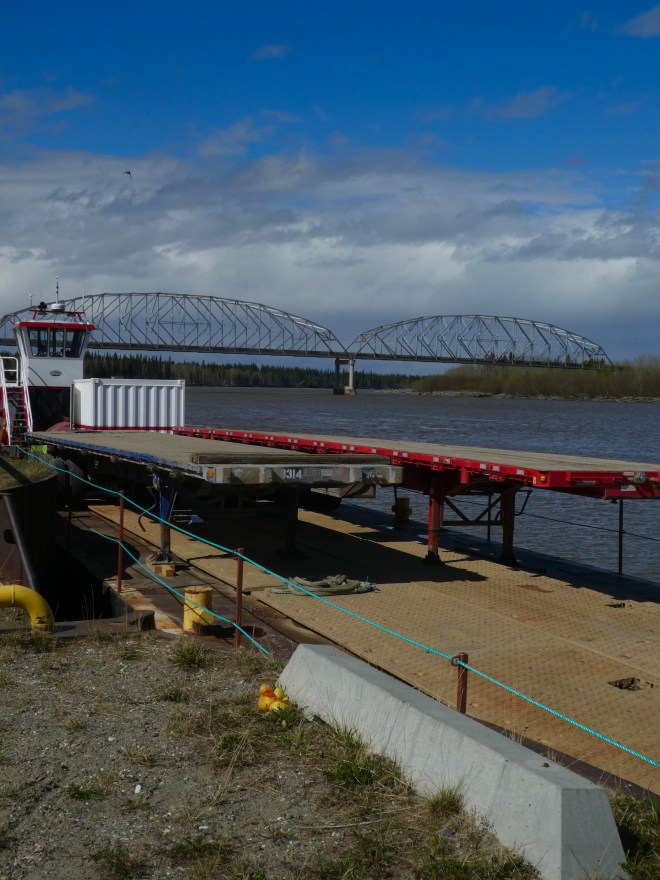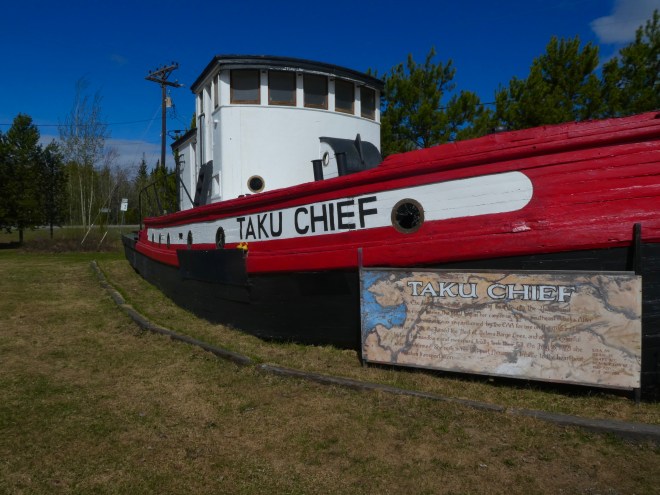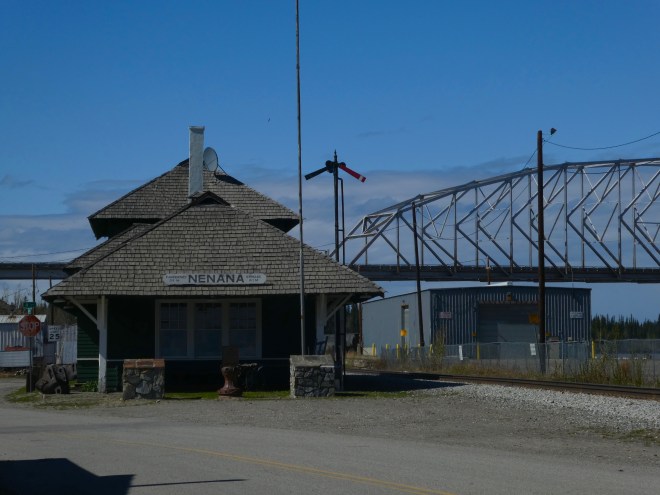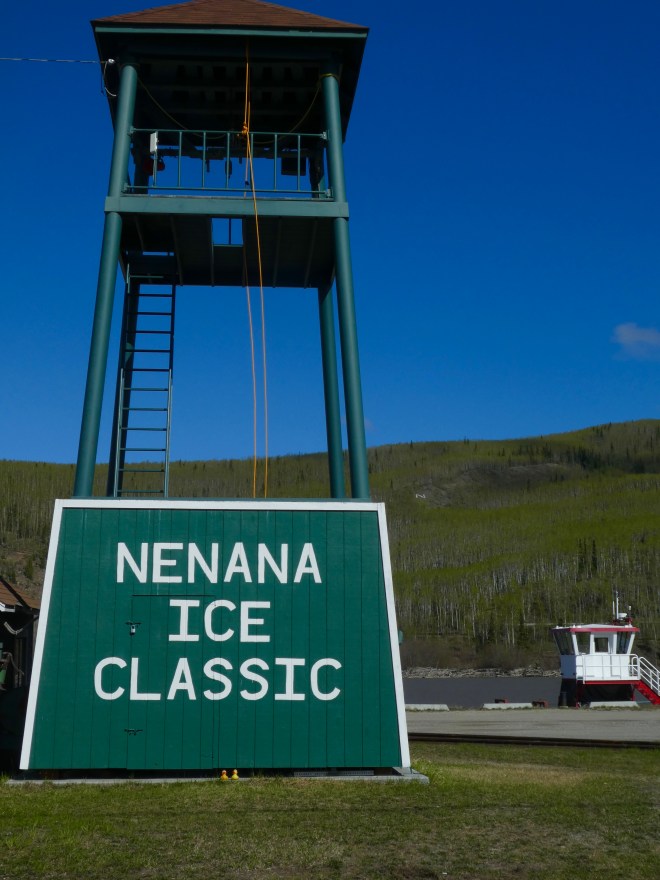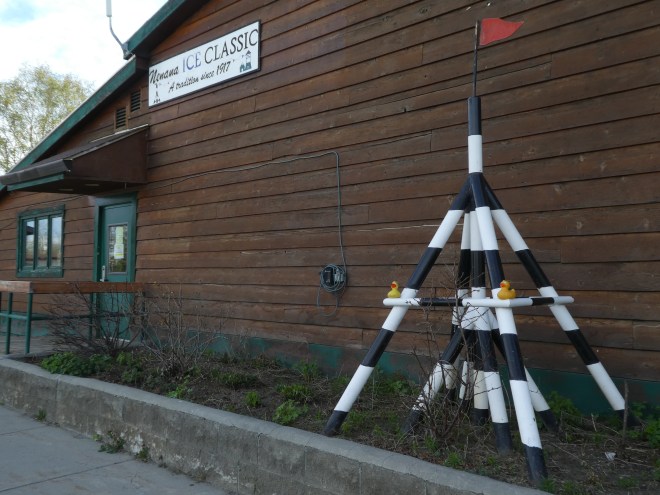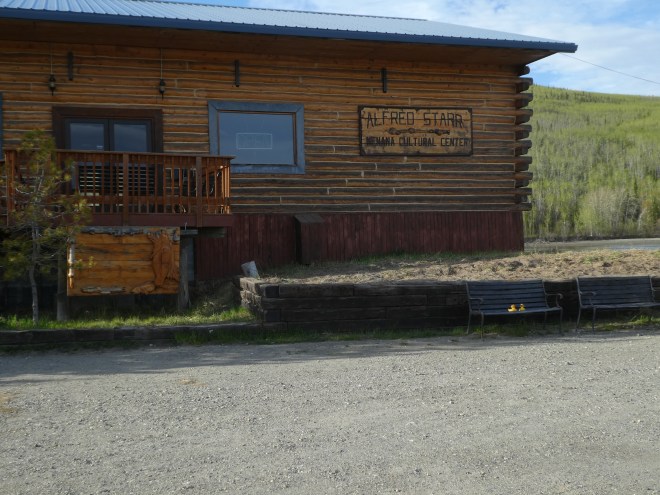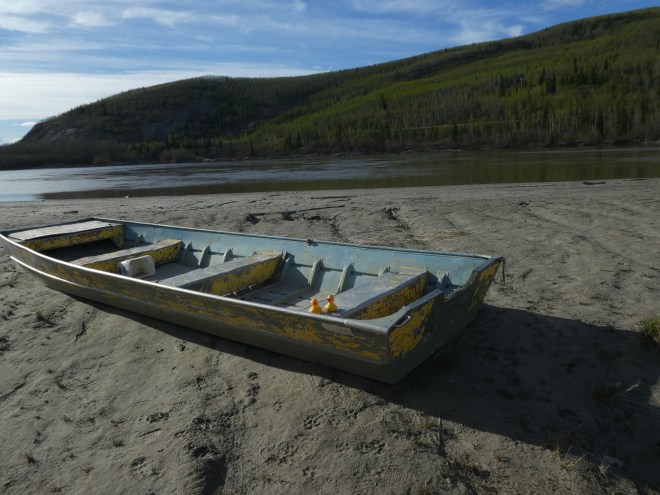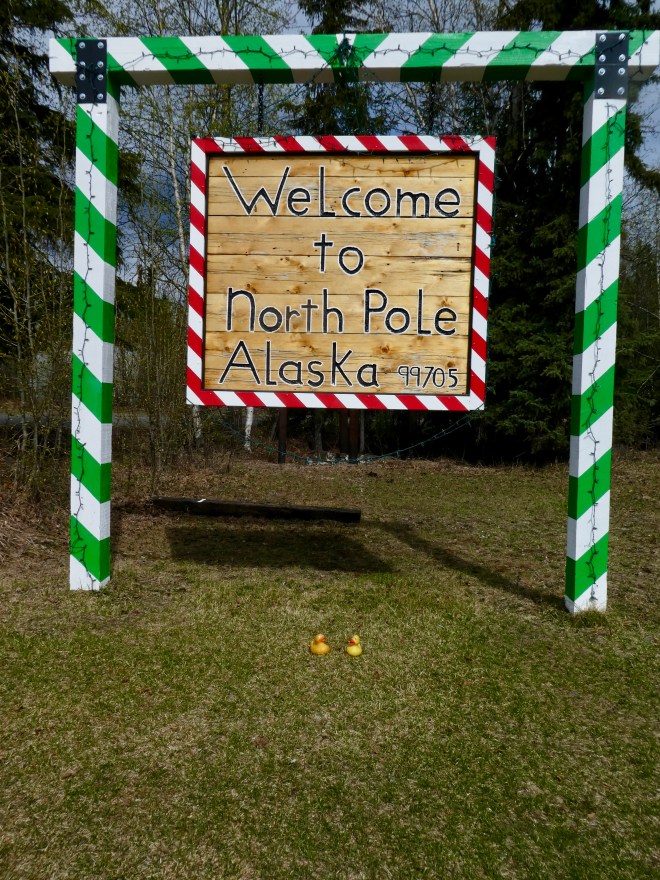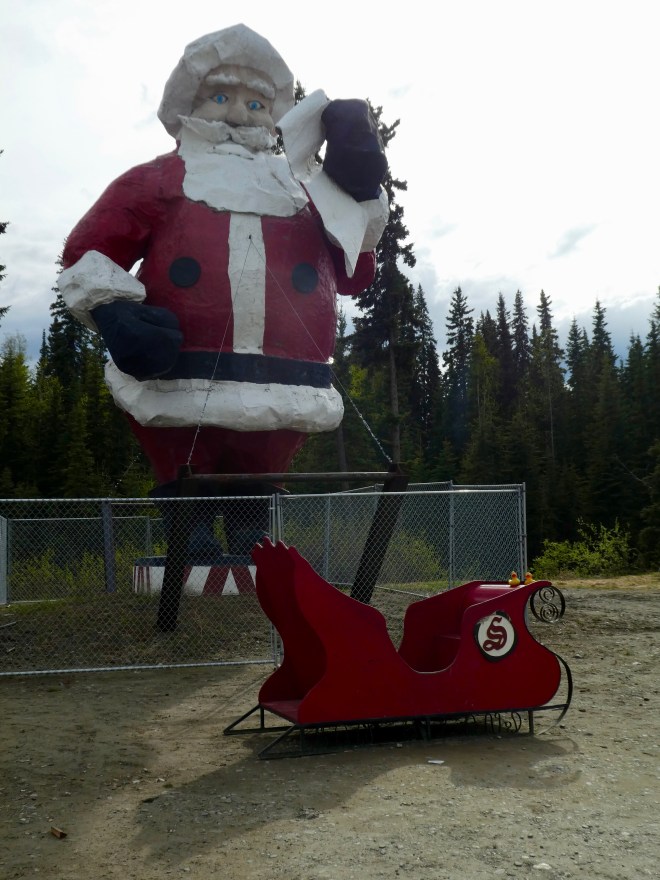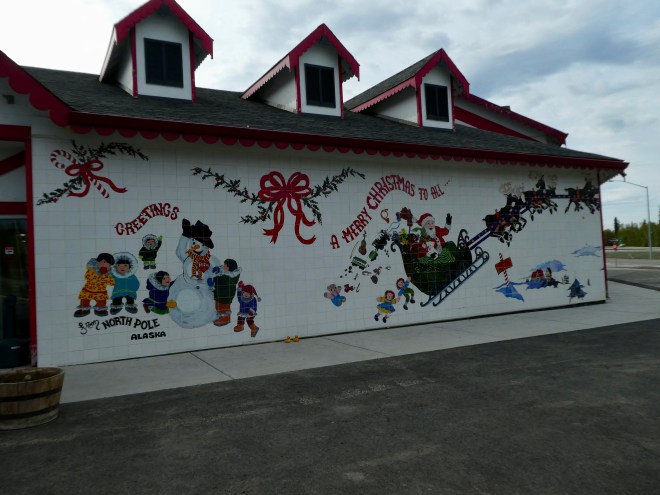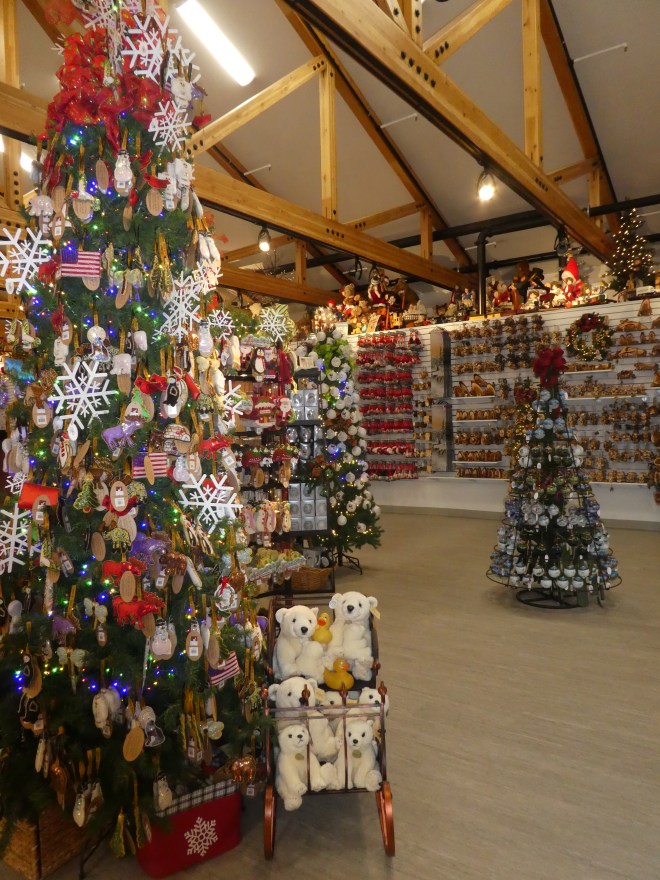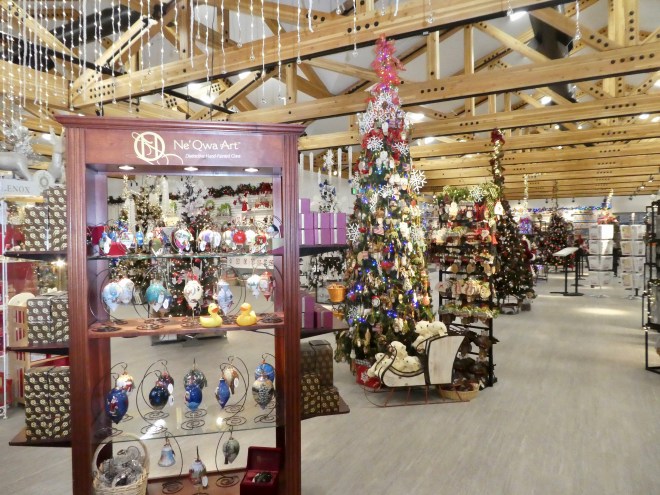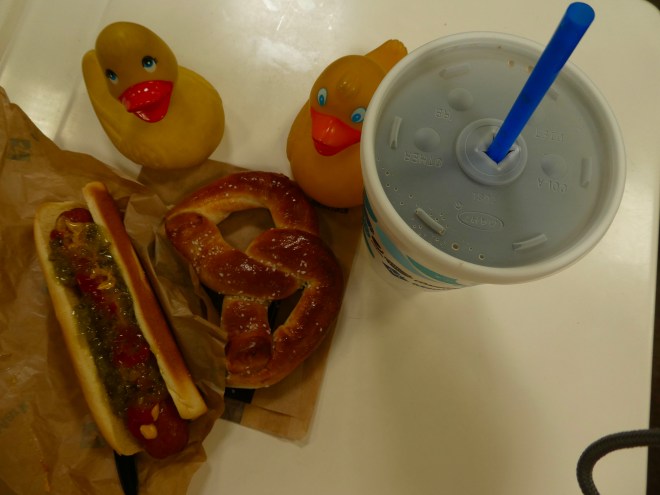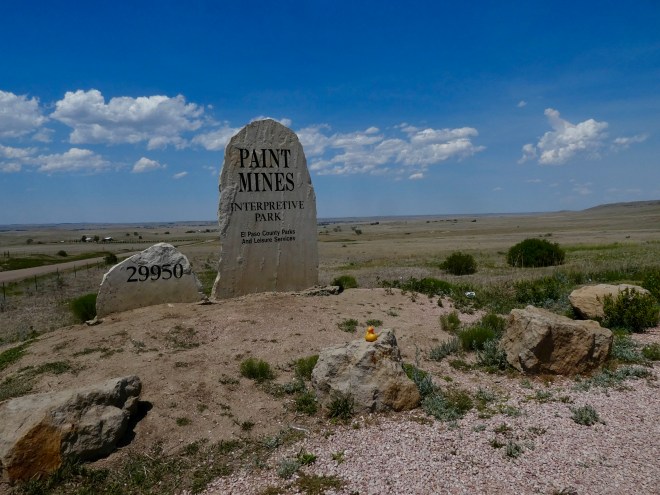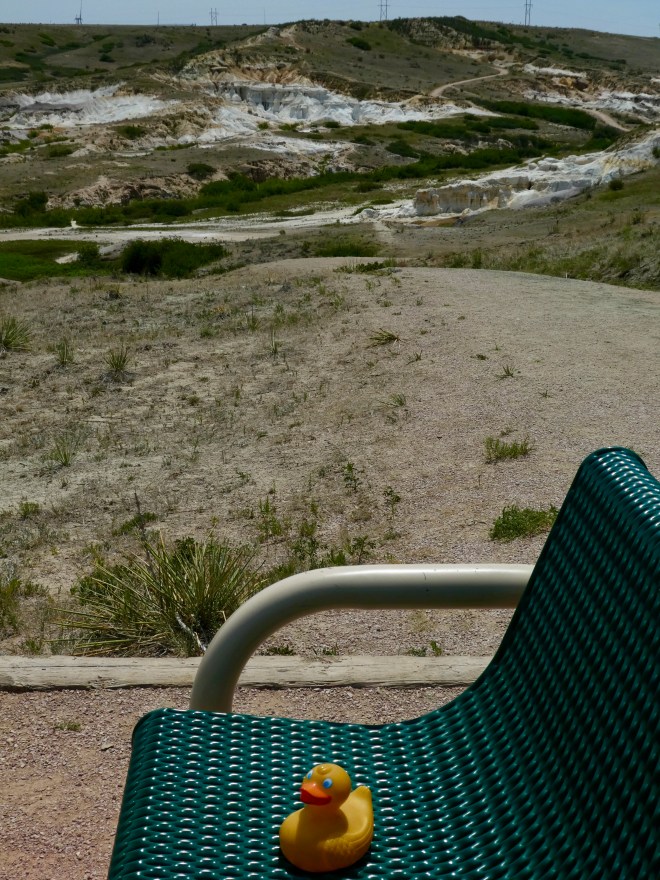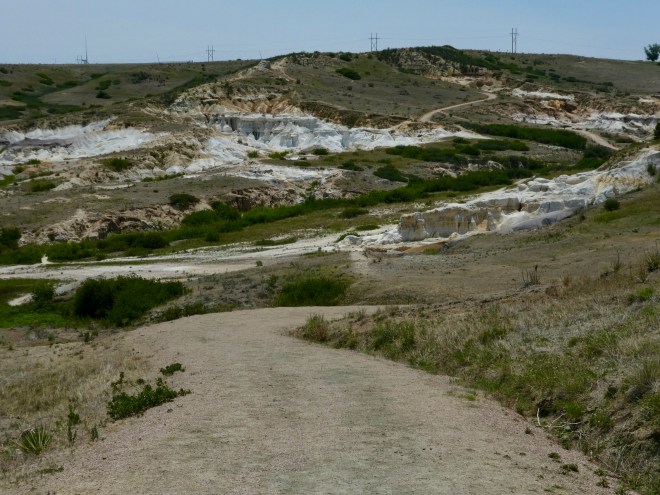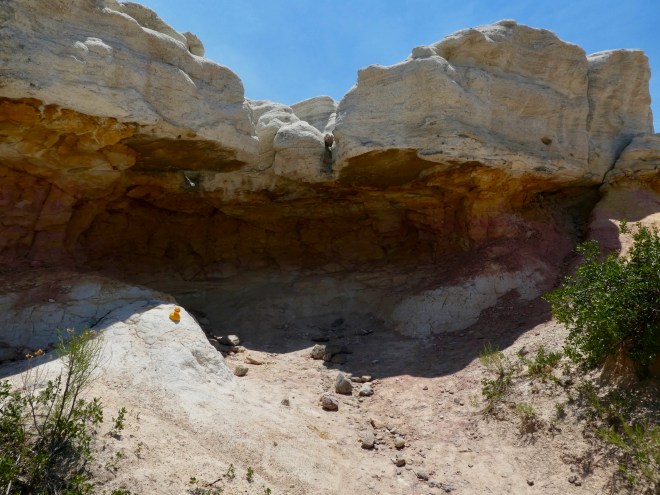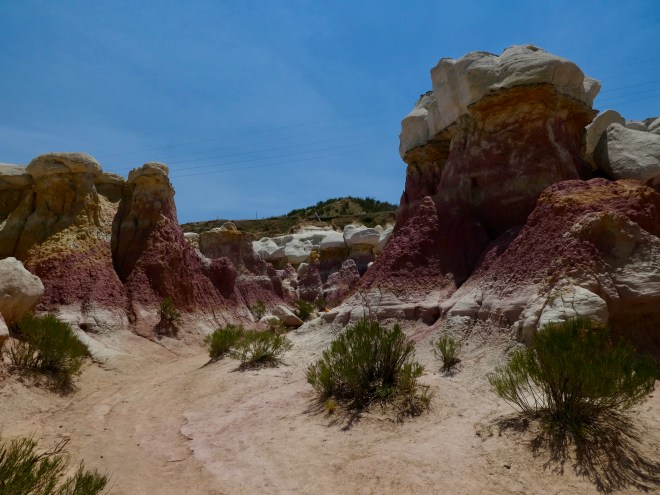Ready to drive the Alaska Highway? Here, in Delta Junction, Alaska, the Alaska Highway, or Alcan (Alaska Canada Highway) officially ends.
But for us, it is just beginning.
We bought this blue Jeep from Eider’s dad’s estate near Fairbanks. Now we are driving it home to Colorado. Yesterday Eider and I took Soapy and his mom to Santa’s House and then to the Knotty Shop. This morning our first stop is the Visitor’s Center in Delta Junction.
Those are gold dredge buckets in front of the building, by the flower pots. This is also a gift shop. Great wood plaques.
Outside we saw these giant mosquitos.
Again, Alaska has big mosquitos, but thankfully, not this huge. This is the official start of the Alaska Highway for our trip.
Our adventure begins. Now the highway is paved all the way. Didn’t used to be paved. Really hard on tires and windshields then. We are told there are enough gas stations, but always stop. The next one might be closed. Several campgrounds and some motels. A couple times we quickly stopped as huge Alaskan moose crossed the road. They were too quick for us to get cameras. The terrain was hilly with mountains to the south, toward Valdez and the end of the TransAlaskan Pipeline. Best part was only seeing another vehicle every 15-30 minutes. So peaceful. About 200 miles (500 km) from Delta Junction, we reached the Canadian border. We will enter Canada’s Yukon Territory.
This is the first time for us ducks to visit Canada. The humans were here before we joined the family. We are sitting on the Friendship Bench.
Americans and Canadians are friends. We see the International Boundary stake, showing the 20 foot (6 meter) path cut by surveyors from 1904 to 1920 along the 141st meridian.
And for those entering Alaska, this sign is a must stop.
Of course, we had to sit under this sign also. Isn’t this a beautiful lake, and at the international border.
We love these views. Driving another 10 miles, we stop at the official customs station. The official was very nice and efficient. We decided to stop in the first Canadian town. This is Beaver Creek. Our Alaska travel planner, The Milepost, says Beaver Creek is the most westerly Canadian community. This is our motel, 1202 Motor Inn.
Soapy and his mom like the room totally dark for sleeping. That is hard to do with the long summer days. There are only a few hours of darkness in the summer. Mom and I like more windows and some light. Soapy had a room in the front, with no windows. Mom and I had a room in the back with windows.
This is actually a trailer attached to the building. We were all happy. Looking across the street, we loved these snow covered mountains.
After walking around town, then eating dinner, we slept really well. Tomorrow we will see more of the Canadian Yukon.
